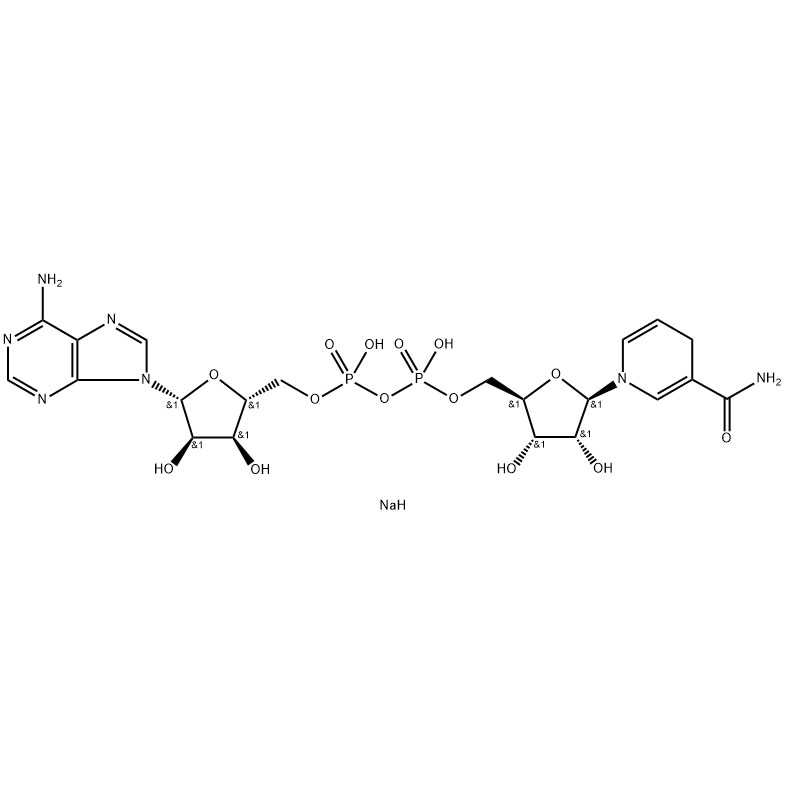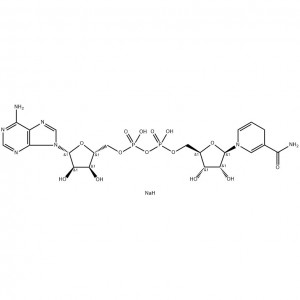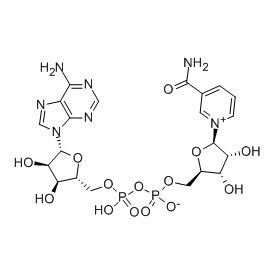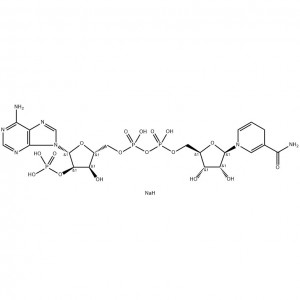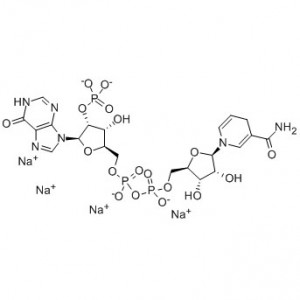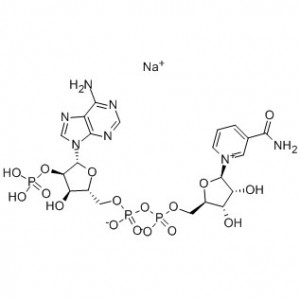β-Nicotinamide adenine dinucleotide, reduced form, disodium salt (NADH ▪ 2NA)
NADH is a reduced coenzyme, with NAD(P)H as the indicator system and the application of chromogen substrate in the determination of enzyme activity: there is an absorption peak at 340nm, which can detect the content of lactate dehydrogenase, so as to detect diseases early.
NADH is divided into diagnostic reagent grade, health food grade.
Diagnostic reagent grade:Combined with a variety of diagnostic enzymes, as the raw material of diagnostic kits.
Health food grade:NADH products are mostly sold in the form of dietary supplements in the European and American markets. There are many brands of NADH products on the market, and the promotional effects focus on anti-aging, helping people with circadian clock disorders to relieve fatigue, improve mental state, and improve the cognitive ability and physical function of insomniacs; in addition, there are moisturizing creams, dental gels, etc. do not use products.Since the first preparation product of NADH was launched in 1996, it has been accepted by the majority of European and American people. Therefore, almost all major European and American nutritional product companies have launched their own independent brand of NADH preparations.
Our market advantage
① Biosynthesis, green and environmental protection, in line with the current environmental protection requirements at home and abroad.
② Low cost and competitive price.
③ Stable supply, long-term stock supply.
| Chemical Name | β-Nicotinamide adenine dinucleotide, reduced form, disodium salt |
| Synonyms | β-Nicotinamide adenine dinucleotide, reduced form, disodium salt |
| CAS Number | 606-68-8 |
| Molecular Weight | 689.44 |
| Molecular Formula | C21H30N7NaO14P2 |
| EINECS No. | 210-123-3 |
| Melting point | 140-142°C |
| storage temp | Inert atmosphere,Store in freezer, under -20°C |
| solubility | H2O: 50 mg/mL, clear to nearly clear, yellow |
| form | Powder |
| color | Yellow |
| PH | 7.5 (100mg/mL in water, ±0.5) |
| Water Solubility | soluble |
| BRN | 5230241 |
| Stability | Stable. Incompatible with strong oxidizing agents. |
| InChIKey | QRGNQKGQENGQSE-WUEGHLCSSA-L |
| CAS DataBase Reference | 606-68-8 |
| EPA Substance Registry System | Reduced .beta.-nicotinamide adenine dinucleotide disodium salt (606-68-8) |
| Test Item | Specifications |
| Appearance | White to slightly yellow powder |
| UV Spectral Analysis | (14.4±0.5)×10³ L/mol/cm |
| Purity | ≥97.0% |
| Water content | ≤6% |
| Sodium content | 5.0~7.0% |
| Total heavy metals | <10ppm |
| Arsenic | <0.5ppm |
| Lead | <0.5ppm |
| Mercury | <0.1ppm |
| Cadmium | <0.5ppm |
| Total Aerobic Microbial Count | <750cfu/g |
| Yeast & Mold | <25cfu/g |
| Total coliform | ≤0.92MPN/g |
| E. Coli | Negative |
| Salmonella | Negative |
| Staph. Aureus | Negative |
| Particle size | Report for information |
| NADH Na2 Content (on anhydrous basis) | ≥97.0% |
Package: Bottle, Aluminum foil bag, 25kg/Cardboard Drum, or according to customer's requirement.
Storage Condition: Preserve in tight, light-resistant containers, and store at -15~-25℃.
NADH is a kind of reduced coenzyme. The application of NAD(P)H as indicator system and chromogen substrate in enzyme activity determination: there is an absorption peak at 340nm, which can detect the content of lactate dehydrogenase, so as to find diseases early. The uses of NADH include diagnostic reagent grade and health food grade.


